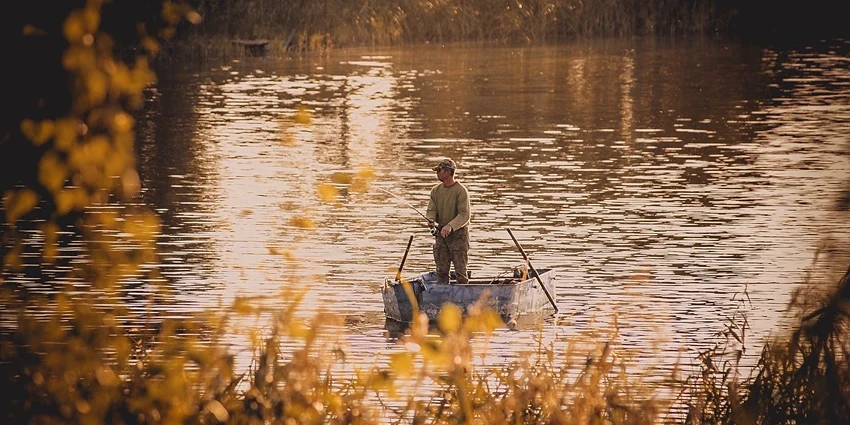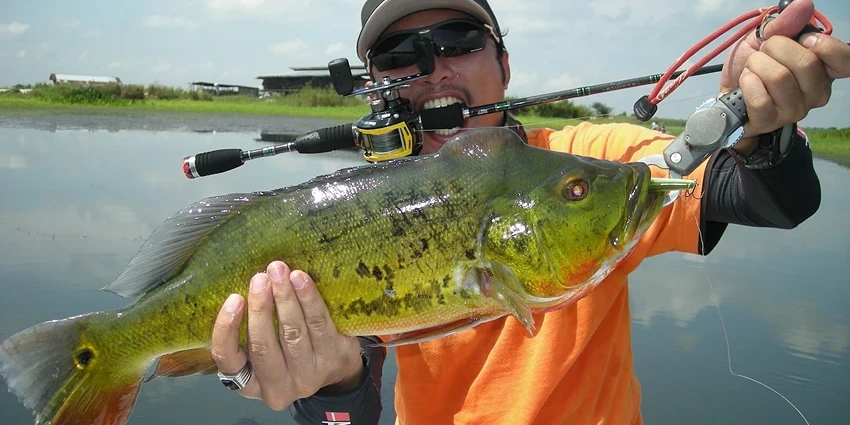All products were chosen independently by our editorial team. This review contains affiliate links and we may receive a commission for purchases made. Please read our affiliates FAQ page to find out more.
Fishing, a blend of skill and serenity, is more than just casting a line and hoping for the best. It’s an art, where every detail counts, especially the condition of your fishing tackle. In this piece, we dive into the world of fishing tackle maintenance, ensuring your gear is always in prime condition for that next big catch.
Understanding Fishing Tackle Maintenance
Fishing tackle maintenance is not just about keeping your gear looking good; it’s about ensuring functionality and reliability when you’re out on the water, especially in demanding fishing methods like deep sea fishing. For detailed techniques, check out our guide on deep sea fishing techniques. Whether you’re a seasoned angler or just starting, these tips will help you keep your tackle in top-notch condition.
Essential Fishing Tackle for Freshwater Angling
- Rods, Reels, and Lines: The backbone of your fishing arsenal. Regular checks for wear and tear can save the day.
- Hooks, Lures, and Baits: These are your direct line to the fish. Keeping them sharp and clean is non-negotiable.
Routine Cleaning and Care for Fishing Rods
- Basic Cleaning Steps: Wipe down your rod after each use to remove dirt and grime. For more specialized advice, particularly for winter bass fishing, explore our winter bass fishing tips.
- Storage Tips: Store your rods vertically in a cool, dry place to prevent warping and damage.

Maintaining Fishing Reels for Optimal Performance
- Cleaning Processes: Regularly clean and lubricate your reels to ensure smooth operation.
- Lubrication Techniques: Use the right lubricant sparingly to avoid attracting dirt and debris.
Line Management: Keeping Your Fishing Line in Top Shape
- Inspection and Replacement: Regularly check your line for nicks and wear, replacing it as needed.
- Storage Solutions: Avoid leaving your line in direct sunlight or in extreme temperatures to prevent degradation.
Hooks, Lures, and Baits: Ensuring Longevity
- Cleaning and Storage Tips: Rinse and dry your hooks and lures after use to prevent rust and corrosion.
- Regular Inspection: Check for dullness and damage, sharpening hooks as necessary.
Tackle Box Organization and Maintenance
- Organizational Tips: Keep your tackle box clean and well-organized for easy access and inventory management.
- Preventing Rust and Corrosion: Use silica gel packets in your tackle box to absorb moisture.
Tables Packed with Value
| Fishing Tackle Component | Maintenance Tip | Frequency |
| Rods | Clean and inspect for damage | After each use |
| Reels | Lubricate and clean | Seasonally |
| Lines | Check for wear and replace | As needed |
| Hooks | Sharpen and clean | After each use |
| Lures | Rinse and dry | After each use |
| Tackle Box | Organize and dry | Regularly |
Seasonal Maintenance for Fishing Tackle
As the seasons change, so should your maintenance routine. Pre-season preparation involves checking all your gear, ensuring everything is in working order. Post-season care, on the other hand, focuses on cleaning and storing your equipment properly to prevent damage during the off-season.
Troubleshooting Common Issues with Fishing Tackle
- Dealing with Damaged Equipment: Learn to identify and fix common problems like bent hooks or twisted lines.
- When to Replace Tackle: Know when it’s time to retire a piece of gear and invest in a new one.
Advanced Cleaning Techniques for Tackle Longevity
- Deep Cleaning Methods: Occasionally, your gear will need more than just a surface clean. Learn the best practices for a thorough clean.
- Professional Maintenance Tips: Sometimes, it’s best to leave it to the pros. Know when to seek expert help.
The Role of Environment in Tackle Maintenance
- Freshwater vs. Saltwater Considerations: Different environments require different care techniques.
- Environmental Impact: Be mindful of how your maintenance practices affect the environment.
DIY Tips for Fishing Tackle Repair
- Simple Fixes and Adjustments: Learn how to handle minor repairs yourself to save time and money.
- When to Seek Professional Help: Recognize when a problem is beyond a DIY fix.
Innovative Storage Solutions for Fishing Gear
- Space-Saving Techniques: Maximize your storage space with creative solutions.
- Protecting Tackle from Elements: Ensure your gear is shielded from harmful environmental factors.
Register for our latest in-depth reviews and product round-ups from the experts
Enter your email address below to receive our twice monthly reviews emails.
By entering your details, you are agreeing to our terms and conditions and privacy policy. You can unsubscribe at any time.
Advanced Cleaning Techniques for Tackle Longevity
Deep Cleaning Methods
- Disassemble Reels: Carefully take apart your reels for a thorough cleaning. This helps in removing any hidden dirt or salt deposits.
- Use Specialized Cleaners: Opt for cleaners specifically designed for fishing gear to avoid damage.
Professional Maintenance Tips
- Seek Expert Advice: Don’t hesitate to consult with a professional for complex maintenance tasks.
- Regular Professional Check-ups: Consider having your gear professionally serviced annually.

The Role of Environment in Tackle Maintenance
Freshwater vs. Saltwater Considerations
- Freshwater Gear: Requires regular cleaning but is generally less susceptible to corrosion.
- Saltwater Gear: Needs more frequent and thorough cleaning to prevent rust and corrosion.
Environmental Impact
- Eco-Friendly Practices: Use biodegradable cleaners and dispose of old lines and lures responsibly.
DIY Tips for Fishing Tackle Repair
Simple Fixes and Adjustments
- Rod Repairs: Learn how to replace rod guides and fix broken tips.
- Reel Fixes: Master the art of adjusting drag and replacing worn-out parts.
When to Seek Professional Help
- Complex Repairs: For intricate issues like gear alignment, professional assistance is recommended.
Innovative Storage Solutions for Fishing Gear
Space-Saving Techniques
- Wall Racks: Utilize vertical space for storing rods and reels.
- Tackle Bags: Opt for compact, multi-compartment bags for easy transport and organization.
Protecting Tackle from Elements
- Climate Control: Store your gear in a cool, dry place to prevent moisture damage.
- UV Protection: Keep gear away from direct sunlight to avoid material degradation.
Tables with Advanced Maintenance Tips
| Maintenance Task | Tools Needed | Tips |
| Reel Disassembly | Screwdrivers, Oil, Grease | Be gentle and keep track of all parts. |
| Rod Guide Replacement | Replacement Guides, Epoxy | Ensure proper alignment before setting. |
| Line Replacement | New Line, Scissors | Choose the right line type for your fishing style. |
Frequently Asked Questions
Ideally, after every fishing trip, especially if you’re fishing in saltwater.
It’s best to use lubricants specifically designed for fishing reels to avoid damage.
Look for signs of wear like fraying or memory coils. As a rule of thumb, replace it at least once a season.
Vertically in a cool, dry place, away from direct sunlight.
For deep cleaning, yes. It helps in maintaining the reel’s longevity and performance.







